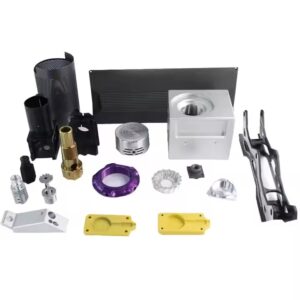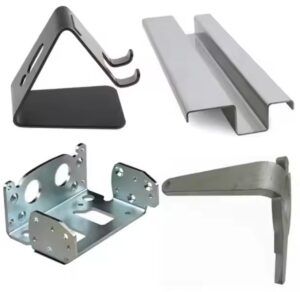Hey there, fellow metal fabricators! Let me tell you something – the surface of a metal part is way more important than most people realize. It’s not just about looking good; it’s about survival in the toughest environments.
Why Surface Treatment Matters
Think of a metal surface like the skin of your product. Just like how we protect our skin from the elements, metal surfaces need protection to:
- Prevent corrosion
- Improve wear resistance
- Enhance aesthetic appeal
- Increase overall product lifespan
Main Categories of Surface Treatment
1. Mechanical Surface Treatments
Shot Blasting
- What it does: Blasts the surface with tiny metal or ceramic balls
- Best for: Cleaning, removing rust, preparing for coatings
- Where you’ll see it: Construction, automotive, industrial equipment
Grinding
- What it does: Smooths surfaces using abrasive wheels
- Best for: Removing imperfections, creating precise finishes
- Pro tip: Watch out for heat generation that can affect metal properties
Polishing
- What it does: Progressive smoothing to create mirror-like finishes
- Best for: Decorative parts, preparing surfaces for further treatment
- Key challenge: Requires multiple stages for best results
2. Chemical Surface Treatments
Acid Etching
- Process: Using acids to clean and modify surface texture
- Applications: Circuit boards, architectural metals
- Safety first: Proper ventilation is critical
Phosphating
- What it does: Creates a protective conversion coating
- Best for: Improving paint adhesion, corrosion resistance
- Industry secret: Temperature control is everything

3. Electrochemical Surface Treatments
Electroplating: The Deep Dive
Electroplating isn’t just about making things shiny – it’s a critical process for protecting and enhancing metal surfaces.
Zinc Plating
- Purpose: Protective coating for steel and iron
- Types:
- Alkaline Zinc Plating: Better for complex shapes
- Acid Zinc Plating: More economical
Chrome Plating
- Two main types:
- Decorative Chrome: Thin, bright layer
- Hard Chrome: Thick, wear-resistant coating
Environmental Considerations
Let’s be real – traditional electroplating has been an environmental nightmare. The good news? We’re getting better:
- Moving away from hexavalent chromium
- Developing trivalent chromium systems
- Exploring alternative coating technologies
4. Thermal Surface Treatments
Heat Treatment
- Process: Controlled heating and cooling
- Goal: Improve hardness and wear resistance
- Critical factor: Precise temperature control
Thermal Spraying
- What it does: Sprays molten material onto surfaces
- Best for: Creating thick, wear-resistant coatings
- Applications: Industrial rollers, engine components
Choosing the Right Treatment
Selecting a surface treatment isn’t a one-size-fits-all game. Consider:
- Environmental conditions
- Performance requirements
- Budget constraints
- Aesthetic needs
- Long-term durability goals
Industry-Specific Recommendations
Automotive
- High-wear parts: Hard chrome plating
- Body panels: E-coating with paint
- Decorative trim: Bright chrome plating
Aerospace
- Aluminum parts: Anodizing
- Steel components: Shot peening with protective coating
- Titanium parts: Specialized chemical treatments
Medical Devices
- Surgical instruments: Electropolishing
- Implants: Biocompatible coatings
- External devices: Corrosion-resistant finishes
Practical Tips for Success
- Always test and validate your surface treatment
- Work closely with specialized surface treatment providers
- Stay updated on emerging technologies
- Consider the entire lifecycle of your product
Conclusion
Look, surface treatment is part science, part art. There’s no magic bullet that works for everything. You’ve got to experiment, learn from your mistakes, and keep pushing the boundaries.
Sometimes you’ll nail it on the first try, sometimes you’ll mess up. That’s just part of the game. The key is to stay curious, keep learning, and never settle for “good enough.”
Want to share your own surface treatment war stories? Drop a comment below. We’re all in this together, learning and improving one metal part at a time.
Catch you on the flip side, metal fabricators!




